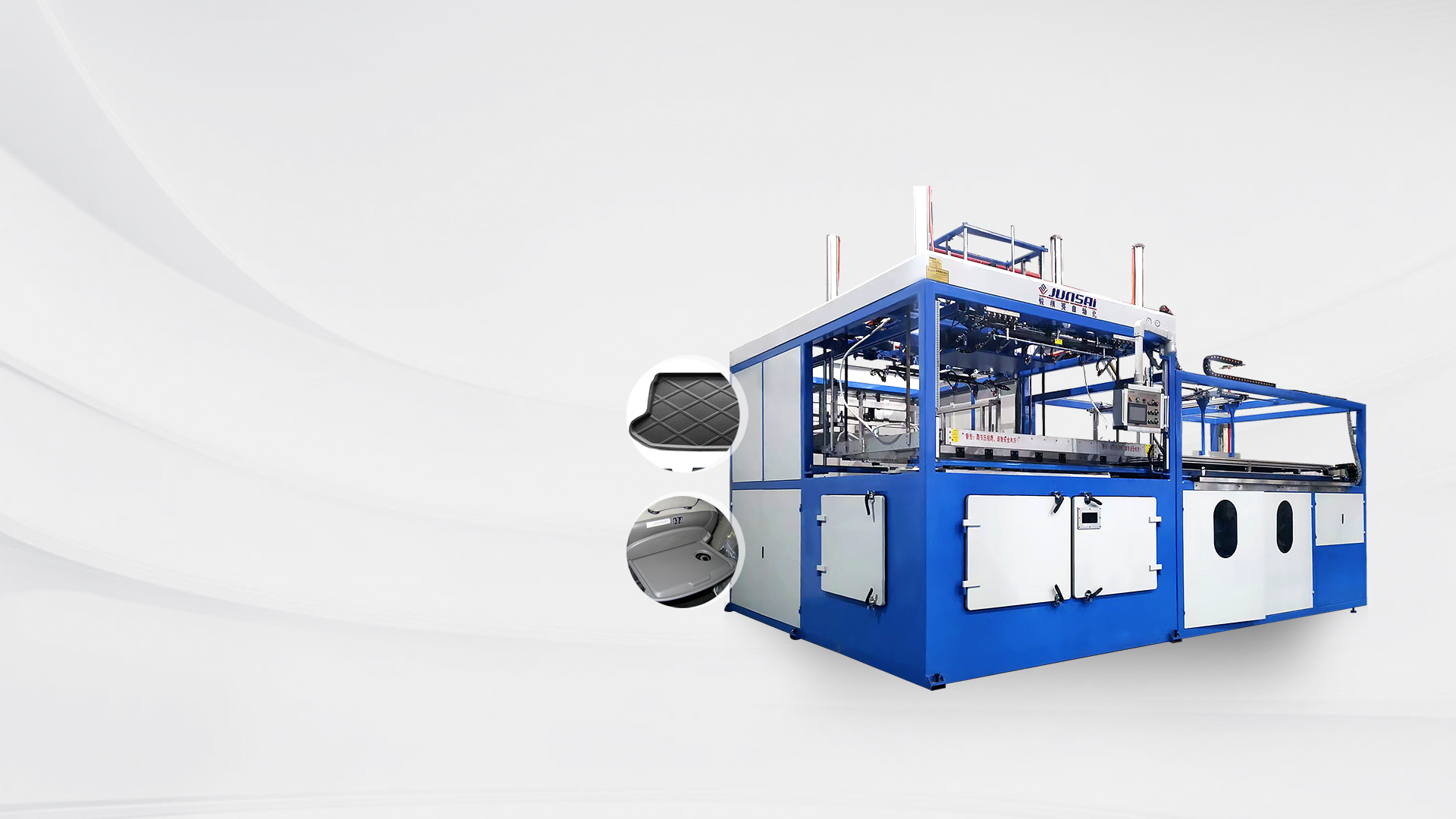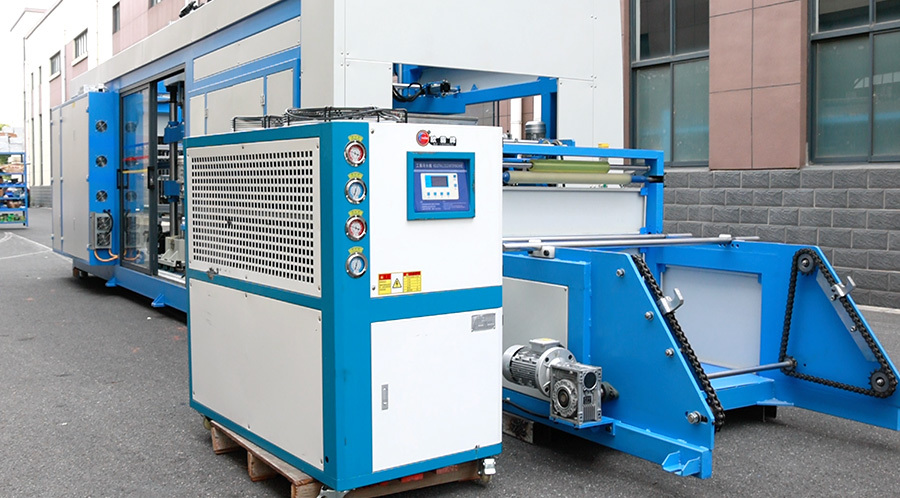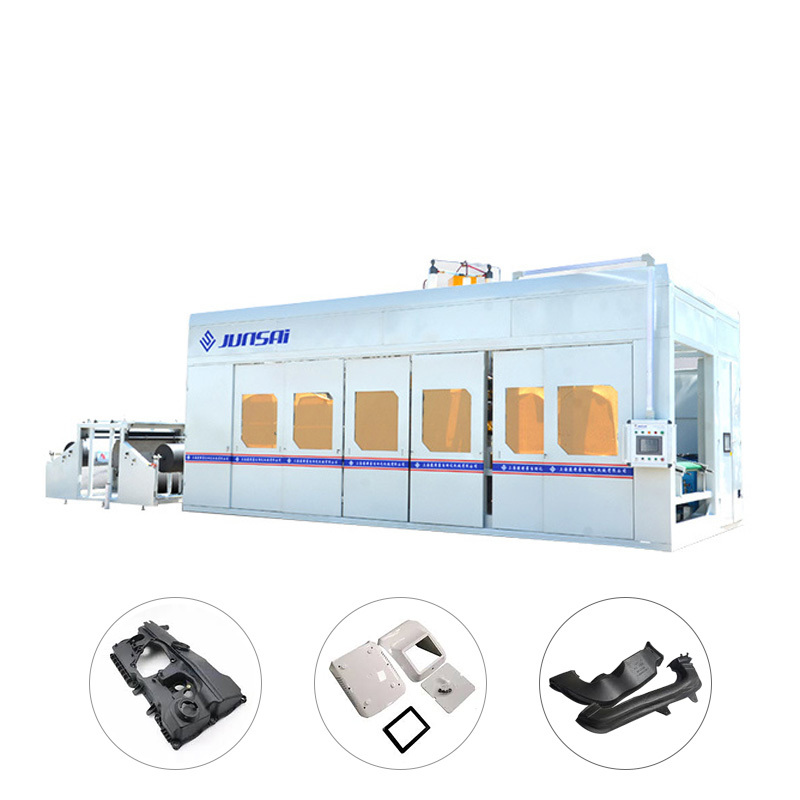Maximize Efficiency: The Advantages of an OEM Industrial Thermoforming Machine
2025-07-05
Maximize Efficiency: The Advantages of an OEM Industrial Thermoforming Machine
Table of Contents
Introduction to OEM Industrial Thermoforming Machines
Understanding Thermoforming: The Process Explained
Why Choose an OEM Thermoforming Machine?
Key Advantages of OEM Industrial Thermoforming Machines
Enhanced Efficiency and Speed
Cost-Effectiveness in
Maximize Efficiency: The Advantages of an OEM Industrial Thermoforming Machine
Table of Contents
- Introduction to OEM Industrial Thermoforming Machines
- Understanding Thermoforming: The Process Explained
- Why Choose an OEM Thermoforming Machine?
- Key Advantages of OEM Industrial Thermoforming Machines
- Enhanced Efficiency and Speed
- Cost-Effectiveness in Production
- Customization and Flexibility
- Improved Product Quality
- Sustainability and Eco-Friendliness
- Applications of OEM Thermoforming Machines
- Choosing the Right OEM Thermoforming Machine for Your Needs
- Future Trends in Thermoforming Technology
- Conclusion
- FAQs About OEM Industrial Thermoforming Machines
Introduction to OEM Industrial Thermoforming Machines
In today's competitive manufacturing landscape, businesses are continuously seeking ways to enhance operational efficiency while maintaining product quality. One of the most effective solutions is investing in **OEM industrial thermoforming machines**. These machines play a crucial role in the production of plastic products by shaping heated plastic sheets into various forms. This article delves deep into the advantages of OEM thermoforming machines that can help manufacturers maximize efficiency and achieve their production goals.
Understanding Thermoforming: The Process Explained
Thermoforming is a manufacturing process that involves heating a plastic sheet until it becomes pliable and then forming it over a mold to create a specific shape. This technique is widely used in various industries, including packaging, automotive, and consumer goods. There are two primary methods of thermoforming: **vacuum forming** and **pressure forming**. Both methods offer unique advantages, but OEM machines typically provide a higher level of precision and efficiency, ensuring that the final products meet industry standards.
Why Choose an OEM Thermoforming Machine?
Choosing an **OEM (Original Equipment Manufacturer)** thermoforming machine means investing in quality, reliability, and advanced technology. OEM manufacturers often provide tailored solutions that cater to the specific needs of businesses, ensuring that the machine performs optimally in a production environment. The advantages of selecting an OEM machine include:
- **Higher-quality components** that enhance durability
- **Cutting-edge technology** that improves speed and efficiency
- **Comprehensive support and maintenance packages**
Key Advantages of OEM Industrial Thermoforming Machines
Understanding the key advantages of OEM industrial thermoforming machines can significantly influence your decision-making process. Here are the top benefits to consider:
Enhanced Efficiency and Speed
OEM thermoforming machines are engineered for optimal performance, allowing manufacturers to produce parts more quickly and efficiently. With features such as rapid heating elements and advanced cooling systems, these machines reduce cycle times, leading to increased output. The result is a significant boost in overall productivity, enabling companies to meet high demand without sacrificing quality.
Cost-Effectiveness in Production
Investing in an OEM thermoforming machine can be a cost-effective solution for manufacturers. These machines often come equipped with energy-efficient technologies that lower operational costs. Additionally, the speed and precision of OEM machines minimize material waste, ensuring that every sheet of plastic is utilized effectively. This translates to lower production costs and higher profit margins.
Customization and Flexibility
One of the standout features of OEM thermoforming machines is their ability to produce customized products tailored to specific customer needs. These machines can easily adapt to different mold designs and material types, allowing businesses to diversify their product offerings. The flexibility offered by OEM machines enables manufacturers to stay competitive in a rapidly evolving market.
Improved Product Quality
Quality control is paramount in manufacturing, and OEM thermoforming machines excel in producing high-quality finished products. With advanced control systems and precise temperature regulation, these machines ensure uniformity and consistency in every batch. This attention to detail results in superior products that meet or exceed industry standards, enhancing brand reputation.
Sustainability and Eco-Friendliness
In an era where sustainability is increasingly important, OEM thermoforming machines can contribute to eco-friendly practices. Many OEM manufacturers offer machines designed to work with recyclable materials, reducing environmental impact. By choosing an OEM machine, companies can align their production processes with sustainability goals while still achieving high efficiency and productivity.
Applications of OEM Thermoforming Machines
OEM thermoforming machines are versatile and find applications across various industries. Some common uses include:
- **Packaging**: Creating custom packaging solutions for food, electronics, and consumer products.
- **Automotive**: Manufacturing interior components and protective covers.
- **Medical**: Producing trays and containers for medical devices and supplies.
- **Consumer Goods**: Developing durable and aesthetically appealing household items.
The adaptability of thermoforming machines makes them invaluable to manufacturers looking to innovate and expand their product lines.
Choosing the Right OEM Thermoforming Machine for Your Needs
Selecting the right OEM thermoforming machine involves several considerations to ensure it meets your production requirements. Key factors to keep in mind include:
- **Production Volume**: Assess your expected output to determine the machine's capacity.
- **Material Compatibility**: Consider the types of plastics you'll be using and ensure the machine can handle them.
- **Customization Features**: Look for machines that offer flexibility in mold designs and production processes.
- **Budget**: Factor in the total cost of ownership, including maintenance and operational costs, to make an informed decision.
Conducting thorough research and engaging with manufacturers can help you find the best solution for your needs.
Future Trends in Thermoforming Technology
As technology continues to evolve, so does the field of thermoforming. Future trends include:
- **Increased Automation**: Automation will enhance efficiency and reduce labor costs.
- **Smart Manufacturing**: Integration with IoT will enable real-time monitoring and data analysis.
- **Sustainable Materials**: The use of biodegradable and recyclable materials will become more prevalent.
Staying abreast of these trends will help manufacturers remain competitive in the industry.
Conclusion
Investing in an OEM industrial thermoforming machine offers numerous advantages that can significantly enhance manufacturing efficiency. From improved production speed and cost-effectiveness to high-quality output and sustainable practices, the benefits are clear. By choosing the right OEM solution tailored to your specific needs, you can not only maximize efficiency but also position your business for long-term success in a competitive marketplace.
FAQs About OEM Industrial Thermoforming Machines
1. What is the lifespan of an OEM thermoforming machine?
The lifespan of an OEM thermoforming machine can vary based on usage, maintenance, and the quality of components. Typically, they can last anywhere from 10 to 20 years with proper care.
2. How often do OEM thermoforming machines require maintenance?
Routine maintenance is essential for optimal performance. It's recommended to perform regular inspections and maintenance checks every few months, depending on usage intensity.
3. Can OEM thermoforming machines accommodate different plastic materials?
Yes, many OEM thermoforming machines are designed to handle a variety of plastic materials, including PET, PVC, and PS, allowing for versatile production options.
4. Are OEM thermoforming machines energy-efficient?
Many modern OEM thermoforming machines incorporate energy-efficient technologies, reducing energy consumption and operating costs.
5. How do I select the right mold for my thermoforming projects?
Choosing the right mold requires an understanding of your product specifications and production goals. Consulting with your OEM manufacturer can provide valuable insights into mold selection based on your needs.
By investing in an OEM industrial thermoforming machine, manufacturers can unlock a new level of efficiency and quality, driving growth and success in their operations.
Keywords:
Related information
The Comprehensive Guide to Wholesale Acrylic Thermoforming Machines
In the world of manufacturing and packaging machinery, wholesale acrylic thermoforming machines play a vital role in shaping and producing a variety of plastic products. These machines utilize a process known as thermoforming, where heated acrylic sheets are molded into specific shapes and sizes based on industry requirements. Understanding the significance of these machines can greatly benefit ma
2025-07-06
Maximize Efficiency: The Advantages of an OEM Industrial Thermoforming Machine
Maximize Efficiency: The Advantages of an OEM Industrial Thermoforming Machine
Table of Contents
Introduction to OEM Industrial Thermoforming Machines
Understanding Thermoforming: The Process Explained
Why Choose an OEM Thermoforming Machine?
Key Advantages of OEM Industrial Thermoforming Machines
Enhanced Efficiency and Speed
Cost-Effectiveness in
2025-07-05
Unleashing Possibilities: The Benefits of Customized Manual Vacuum Forming Machines
In the manufacturing industry, efficiency and precision are key components that can determine the success of a business. One avenue to achieve these goals is through the use of customized manual vacuum forming machines. These machines are designed to shape thermoplastic materials into intricate forms, making them an invaluable asset in various applications, particularly in the packaging sector.
A
2025-07-04












